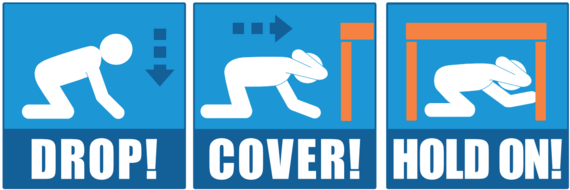
FEMA Deputy Administrator Erik A. Hooks discusses the Great ShakeOut – and why you should participate in the international earthquake drill.
If you have ever felt the ground shake beneath your feet, you are probably familiar with the uncertainty which follows. Earthquakes happen without warning, giving you even less time to act. This means it’s especially important to prepare and know how to respond in the moment.
Each year, our agency participates in the International Great ShakeOut Earthquake drill to focus on earthquake preparedness. On Oct. 20 at 10:20 a.m. (local time), people around the world will participate in the drill. Participants often share photos of themselves taking part in the drill on social media to raise awareness.

FEMA is working on multiple projects to help create a more resilient nation which stands strong during earthquakes. Last month, I traveled to Utah and learned about their issues with Unreinforced Masonry Buildings.
Unreinforced Masonry buildings have brick walls with few or no steel reinforcing bars. During an earthquake, these buildings are more likely than modern structures to collapse – both inward and outward – and crumble on top of people, cars, sidewalks or structures in and around them. While building codes in many areas were updated to outlaw the construction of these buildings, many of the structures remain – including some schools.
Utah’s Division of Emergency Management, FEMA Region 8 and local partners are working on a multi-year effort to reduce the number of unreinforced masonry buildings in Utah.
There are many tools and funding options available for emergency managers who want to introduce the same safety measures in their own community. One of these is the FEMA National Earthquake Hazards Reduction Program.
This program was created to increase and enhance the implementation of earthquake risk reduction at the local level. With FEMA funding, eligible states and territories can:
- Develop seismic mitigation planning.
- Develop inventories and conduct safety inspections.
- Update building and zoning codes.
- Increase earthquake awareness and education.
- Promote earthquake insurance.
There are many ways to create a safer, more-resilient nation. Making sure our communities know how to respond to earthquakes and having confidence in our buildings to withstand them are two of the most important ways we can do that.
Take some time today to learn more about these FEMA grants on our Earthquake Risk pages and register today to participate in the Great ShakeOut. You can also text “ShakeOut” to 43362 for earthquake tips and preparedness.
Let’s prepare together today, for a stronger future for the nation.

